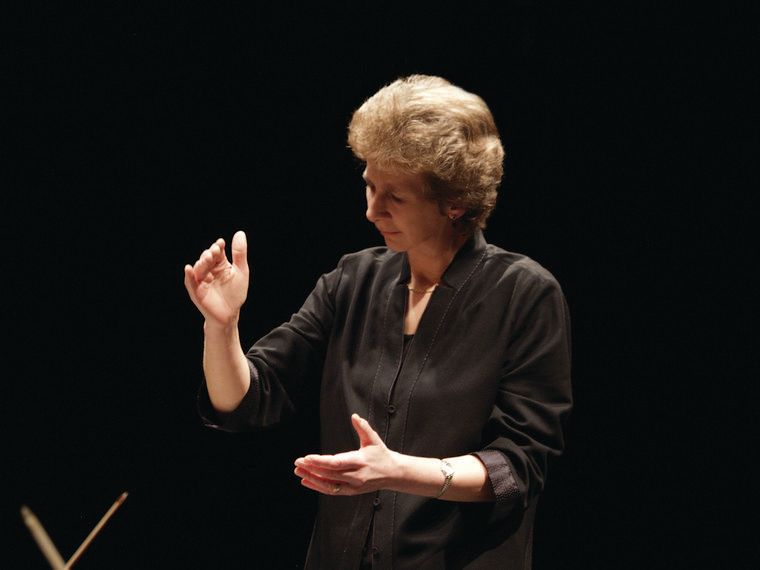
October 13, 2021
Dame Jane Glover on Mendelssohn’s Scottish Symphony
This month the Houston Symphony is delighted to welcome back our friend and frequent collaborator, the esteemed Dame Jane Glover who will lead the orchestra in Mendelssohn’s picturesque Scottish Symphony. Quickly into his first and only trip to Scotland, inspiration struck the composer, which he recounted in a series of letters back home about the opening movement of this piece. We met with Glover to dive into a bit of the background on the piece and what audiences can expect to hear later this month.

Houston Symphony: You’re internationally renowned as one of our greatest conductor/scholars for music of the Baroque period and such composers as Handel and Bach. Does conducting this piece from a Romantic era composer require you to alter your approach to the piece or to communicate differently with the musicians?
Jane Glover: Not really! There are more people on the platform, but the approach is the same.
HS: Specifically, Mendelssohn wrote in an 1829 letter that the opening of this work was inspired by his visit to the Holyrood Palace where the ill-fated Mary, Queen of Scots was crowned as sovereign. The piece’s opening measures are described as dark and brooding, with a sort of quiet, simmering passion. In your opinion, what musical elements can audiences identify and attribute to Scotland?
JG: The letter that Mendelssohn wrote to his family from Scotland, after the visit to the ruined chapel at Holyrood, does state that he thought he had found there the beginnings of his Scottish symphony. He certainly depicts something dark and serious in the opening bars, with their low-instrument scoring. But apart from that and passing echoes later on of the seas around the Hebrides, which we also hear in his Hebrides overture, the Scottish connection is a spur, no more.
HS: Although he began the piece in 1829, it would not be premiered until 1842, at which time it was dedicated to another royal, Queen Victoria. Can you speak to the role composers and music played to palace life in the Romantic era compared to those court and church-appointed composers such as Bach a couple centuries prior?
JG: This was a courteous dedication (and perhaps a glancing acknowledgment of the first Queen whose chapel had inspired him), made in the year that Mendelssohn actually visited Queen Victoria at Buckingham Palace. She was a great admirer of his and loved to listen to him playing. In Bach’s day, the relationship with courtly or regal patrons was different, in that they could and did offer permanent employment… and to an extent issue instruction.
HS: Mendelssohn’s original conclusion to the piece is genial in nature, signifying a happier ending, however, several Twentieth Century music critics were more in favor of the piece’s prominent dark themes, even going as far as to rewrite the ending coda. Both versions (Mendelssohn’s original ending and Twentieth Century rewrites) have been recorded, but there’s been a recent movement to revert to Mendelssohn’s original intention for the finale. Which version will you be performing with the symphony and why?
JG: We will definitely be performing Mendelssohn’s original upbeat ending to the symphony. Although it begins perhaps in despondency, it certainly ends triumphantly!
Ready your passports and embark on a trip to Scotland, a land of castles and Highland beauty, when the Houston Symphony and Jane Glover perform this enchanting work, October 22–24 at Jones. For tickets and more information, including livestream options, visit the concert page.
By Mark Bailes






